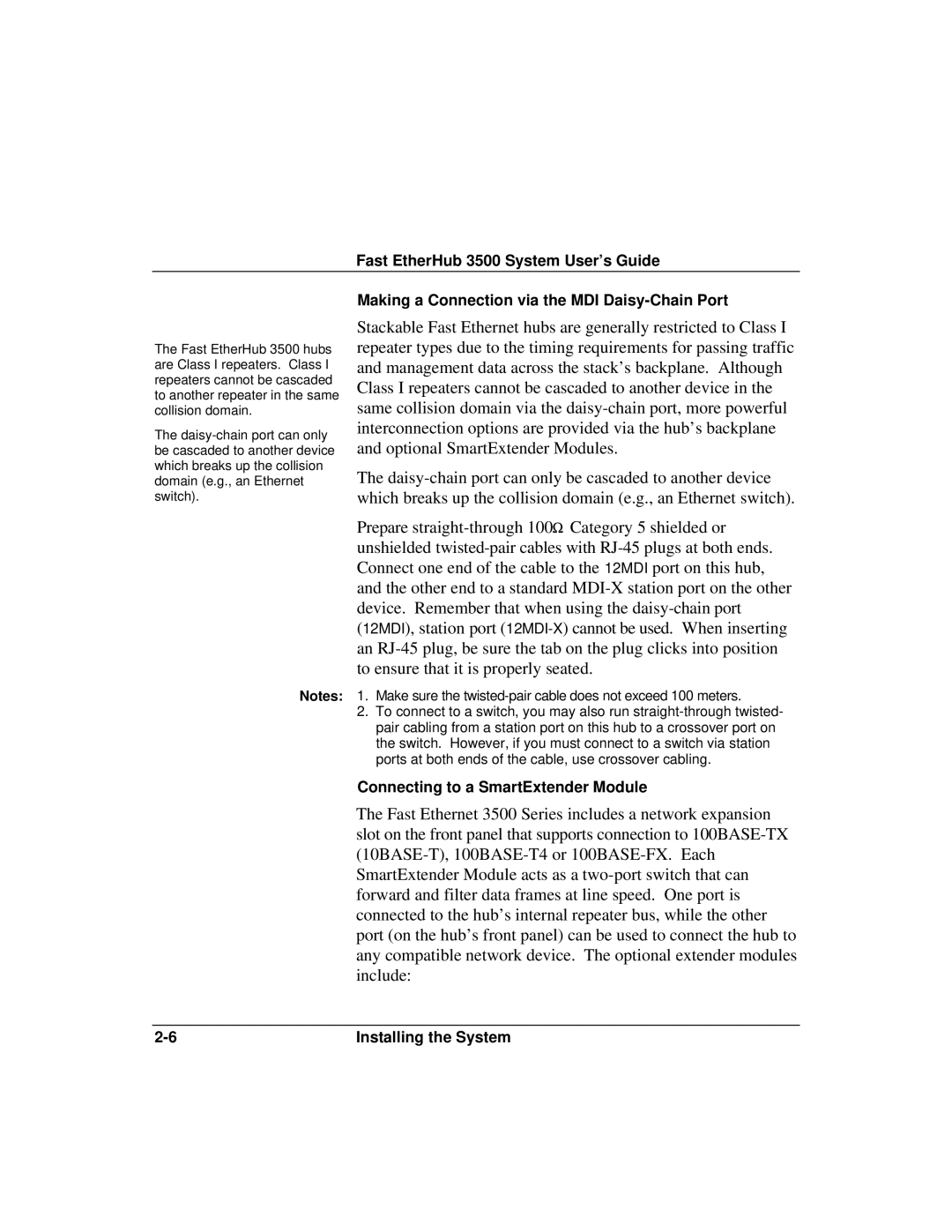The Fast EtherHub 3500 hubs are Class I repeaters. Class I repeaters cannot be cascaded to another repeater in the same collision domain.
The daisy-chain port can only be cascaded to another device which breaks up the collision domain (e.g., an Ethernet switch).
Notes:
Making a Connection via the MDI Daisy-Chain Port
Stackable Fast Ethernet hubs are generally restricted to Class I repeater types due to the timing requirements for passing traffic and management data across the stack’s backplane. Although Class I repeaters cannot be cascaded to another device in the same collision domain via the daisy-chain port, more powerful interconnection options are provided via the hub’s backplane and optional SmartExtender Modules.
The daisy-chain port can only be cascaded to another device which breaks up the collision domain (e.g., an Ethernet switch).
Prepare straight-through 100W Category 5 shielded or unshielded twisted-pair cables with RJ-45 plugs at both ends. Connect one end of the cable to the 12MDI port on this hub, and the other end to a standard MDI-X station port on the other device. Remember that when using the daisy-chain port (12MDI), station port (12MDI-X) cannot be used. When inserting an RJ-45 plug, be sure the tab on the plug clicks into position to ensure that it is properly seated.
1.Make sure the twisted-pair cable does not exceed 100 meters.
2.To connect to a switch, you may also run straight-through twisted- pair cabling from a station port on this hub to a crossover port on the switch. However, if you must connect to a switch via station ports at both ends of the cable, use crossover cabling.
Connecting to a SmartExtender Module
The Fast Ethernet 3500 Series includes a network expansion slot on the front panel that supports connection to 100BASE-TX (10BASE-T), 100BASE-T4 or 100BASE-FX. Each SmartExtender Module acts as a two-port switch that can forward and filter data frames at line speed. One port is connected to the hub’s internal repeater bus, while the other port (on the hub’s front panel) can be used to connect the hub to any compatible network device. The optional extender modules include:

